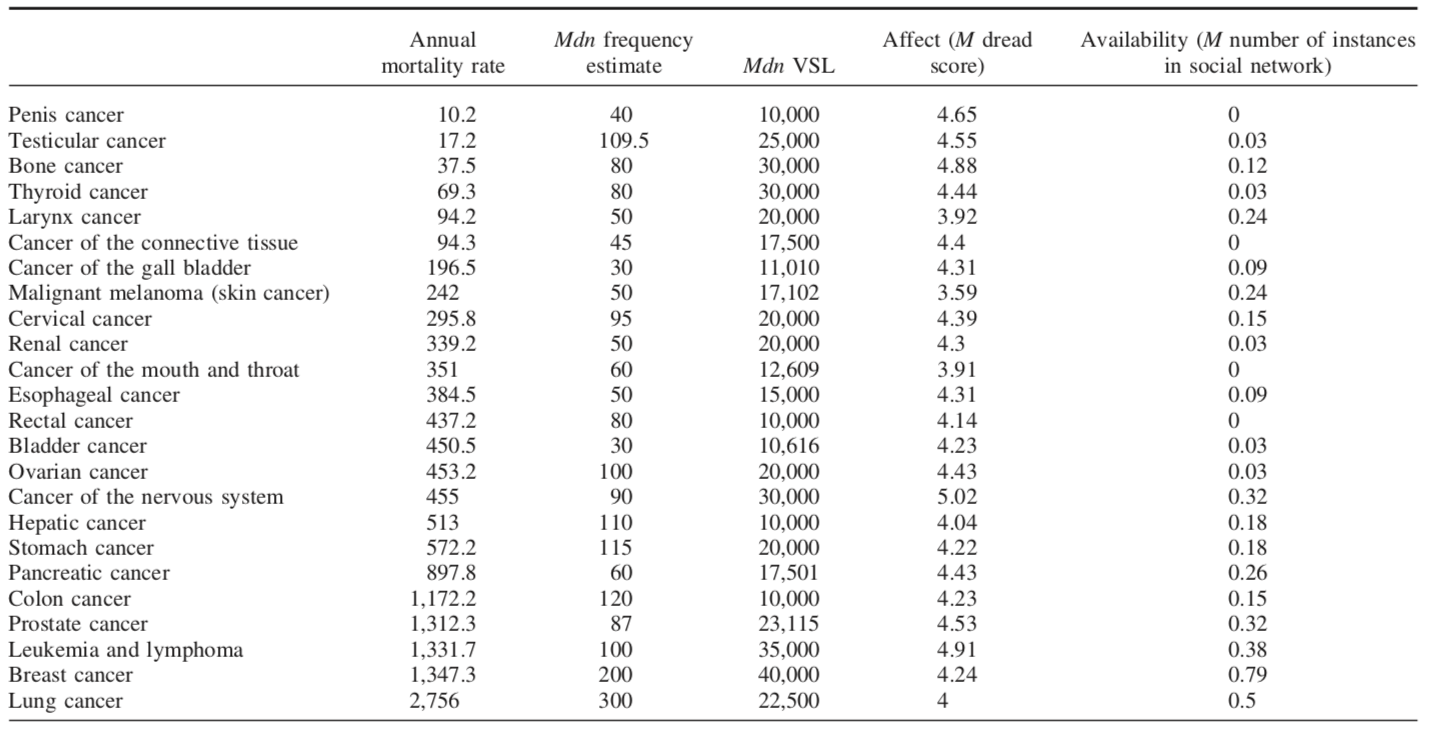The Affect Heuristic and Risk: A Case Study
We need more evidence or argument to accept the the hypothesis that the Affect Heuristic explains moral intuitions. To identify what kind of evidence or argument might work, we will consider a case from outside moral psychology whereas a similar hypothesis about a heuristic was successfully established.
By the end of this section you should better understand what kind of evidence might support the conclusion that people rely on a particular heuristic in making certain kinds of judgement.
If the video isn’t working you could also watch it on youtube. Or you can view just the slides (no audio or video).
This recording is also available on stream (no ads; search enabled).
If the slides are not working, or you prefer them full screen, please try this link. The recording is available on stream and youtube.
Notes
In Moral Intuitions and Emotions: Evaluating the Evidence, we concluded that more evidence or argument would be needed to determine whether we should accept the hypothesis that the Affect Heuristic explains moral intuitions.
But what kind of evidence or argument could decide the issue? To answer this question, let us consider a case from outside moral psychology where a simililar hypothesis about a heuristic was successfully established.
A Case Study: Risk
Pachur, Hertwig, & Steinmann (2012) investigated how naive humans’ unreflective judgements track three related attributes:
- frequency (which cause of death has a higher annual mortality rate?)
- risk (which cause of death represents a higher risk of dying from it?)
- Value of a Statistical Life, VSL (how much money should be spent to avoid one fatality due to this cause of death?)
You can see the actual frequencies (in Switzerland) and the subjects’ median estimates of frequency for 24 types of cancer in Table 1 of Pachur et al. (2012).1
Since the attributes tracked were inaccessible to the subjects, they cannot have been computing the attributues themselves. Instead they must have been computing something which, within limits, correlates with the attributes (like tracking toxicity by computing how smelling or tasting a potential food makes you feel; see Two Questions about Moral Intuitions).
In this situation, there are at least two heuristics the subjects might use:
Availability Heuristic The easier it is to bring a case of this cancer to mind, the more frequent or risky it is.
Affect Heuristic (for frequency and risk2 The more dread you feel when imagining it, the more frequent or risky it is.
Pachur et al. (2012) propose a hypothesis about how different attributes are tracked using different heuristics:
Hypothesis: The Availability Heuristic dominates frequency judgements, whereas the Affect Heuristic dominates risk and VSL judgements.
This hypothesis generates a readily testable prediction:
Prediction: Number of cases in a subject’s social network will better predict frequency judgements, whereas feelings of dread will better predict risk and VSL judgements.
Pachur et al. (2012) tested these predictions. They found that:
‘availability-by-recall offered a substantially better descriptive account than the affect heuristic when people judged deindividualized, statistical mortality rates. Affect, however, was at least on par with availability when people were asked to put a price tag on a single life saved from a risk, or when they were asked to indicate the perceived risk of dying’ (p. 324).
I take these findings to provide a paradigm case where a hypothesis about a heuristic was successfully established. (But you should evaluate the evidence for yourself; see Moral Intuitions and Emotions: Evaluating the Evidence.)
How does this paradigm case compare with the argument and evidence we considered (see Moral Intuitions and Emotions: Evidence) in the case of moral intuitions …
Applying the Case Study to Moral Intuitions
The argument of Pachur et al. (2012) involves two related features:
- It is known in advance of gathering the evidence that the attribute tracked is inaccessible to the subjects (so could be not what they compute).
- The evidence supports a view about which heuristic is used (Availablity or Affect), not whether a heuristic is used.
These two points indicate that we cannot take findings like those of Schnall, Haidt, Clore, & Jordan (2008) to establish conclusions about whether a heuristic is being used. Instead we need to establish, in advance of gathering such evidence, whether (or not) moral attributes are inaccesible.
Are moral attributes—like risk, frequency and VSL—inaccessible?
Glossary
A different (but related) Affect Heurstic has also be postulated to explain how people make judgements about risky things are: The more dread you feel when imagining an event, the more risky you should judge it is (see Pachur et al., 2012, which is discussed in The Affect Heuristic and Risk: A Case Study).
See Kahneman & Frederick (2005, p. 271): ‘We adopt the term accessibility to refer to the ease (or effort) with which particular mental contents come to mind.’
According to Sinnott-Armstrong et al. (2010, p. 256), moral intuitions are ‘strong, stable, immediate moral beliefs.’
Tracking an attribute is contrasted with computing it. Unlike tracking, computing typically requires that the attribute be represented. (The distinction between tracking and computing is a topic of Two Questions about Moral Intuitions.)
References
-
 Figure: Actual frequencies (in Switzerland) and subjects’ median estimates of frequency for 24 types of cancer. Source: Pachur et al. (2012, p. Table 1). ↩
Figure: Actual frequencies (in Switzerland) and subjects’ median estimates of frequency for 24 types of cancer. Source: Pachur et al. (2012, p. Table 1). ↩ -
Yes, it is potentially confusing that we are using the same term, ‘Affect Heuristic’ for a different heuristic. The common theme is tracking an attribute by computing how something makes you feel. ↩